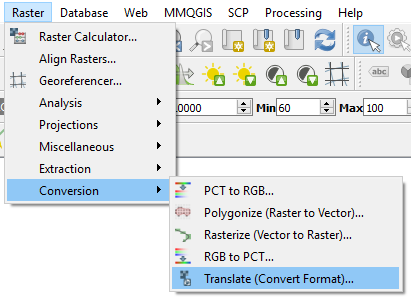Create a new QGIS project and load into the map the landcover.img file. We'll use this layer to demonstrate a couple of the many raster processing tools in QGIS. On load, we have landcover classes with values ranging from 0 to 13. The value zero appears to correspond to water. In this example, we're going to set all of the values that are equal to zero to nodata. In GIS we would set raster data to no data when we have data that we don't want to use or display.
To change the 0 values in the Landcover dataset to nodata, select Raster | Conversion | Translate (Convert Format) as shown in the following screenshot:

The Translate tool is very helpful to convert rasters into different data types and formats. It's built on the GDAL translate tool; you can read about the options with gdal_translate here: https://www.gdal...



